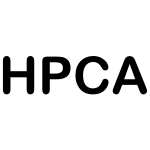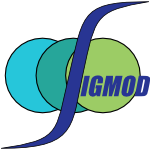8 papers:
 CSCW-2014-LingelR #quote #tool support
CSCW-2014-LingelR #quote #tool support- “It’s in your spinal cord, it’s in your fingertips”: practices of tools and craft in building software (JL, TR), pp. 295–304.
 HPDC-2014-XiaHD #memory management #named
HPDC-2014-XiaHD #memory management #named- ConCORD: easily exploiting memory content redundancy through the content-aware service command (LX, KCH, PAD), pp. 25–36.
 DUXU-v1-2011-SpyridonisG #2d #3d #visualisation
DUXU-v1-2011-SpyridonisG #2d #3d #visualisation- 2D vs. 3D Pain Visualization: User Preferences in a Spinal Cord Injury Cohort (FS, GG), pp. 315–322.
 CHI-2010-SchwarzHHM #mobile #multi
CHI-2010-SchwarzHHM #mobile #multi- Cord input: an intuitive, high-accuracy, multi-degree-of-freedom input method for mobile devices (JS, CH, SEH, JM), pp. 1657–1660.
 HPCA-2006-Prvulovic #concurrent #detection #effectiveness #named
HPCA-2006-Prvulovic #concurrent #detection #effectiveness #named- CORD: cost-effective (and nearly overhead-free) order-recording and data race detection (MP), pp. 232–243.
 SIGMOD-2004-IlyasMHBA #automation #correlation #dependence #functional #named
SIGMOD-2004-IlyasMHBA #automation #correlation #dependence #functional #named- CORDS: Automatic Discovery of Correlations and Soft Functional Dependencies (IFI, VM, PJH, PB, AA), pp. 647–658.
 VLDB-2004-IlyasMHBA #automation #correlation #generative #named #statistics
VLDB-2004-IlyasMHBA #automation #correlation #generative #named #statistics- CORDS: Automatic Generation of Correlation Statistics in DB2 (IFI, VM, PJH, PGB, AA), pp. 1341–1344.
 HCI-CCAD-1999-SearsB #recognition #speech
HCI-CCAD-1999-SearsB #recognition #speech- Redesigning speech recognition for use by individuals with spinal cord injuries (AS, JBR), pp. 966–969.
 CSCW-2014-LingelR #quote #tool support
CSCW-2014-LingelR #quote #tool support HPDC-2014-XiaHD #memory management #named
HPDC-2014-XiaHD #memory management #named DUXU-v1-2011-SpyridonisG #2d #3d #visualisation
DUXU-v1-2011-SpyridonisG #2d #3d #visualisation CHI-2010-SchwarzHHM #mobile #multi
CHI-2010-SchwarzHHM #mobile #multi HPCA-2006-Prvulovic #concurrent #detection #effectiveness #named
HPCA-2006-Prvulovic #concurrent #detection #effectiveness #named SIGMOD-2004-IlyasMHBA #automation #correlation #dependence #functional #named
SIGMOD-2004-IlyasMHBA #automation #correlation #dependence #functional #named VLDB-2004-IlyasMHBA #automation #correlation #generative #named #statistics
VLDB-2004-IlyasMHBA #automation #correlation #generative #named #statistics HCI-CCAD-1999-SearsB #recognition #speech
HCI-CCAD-1999-SearsB #recognition #speech









